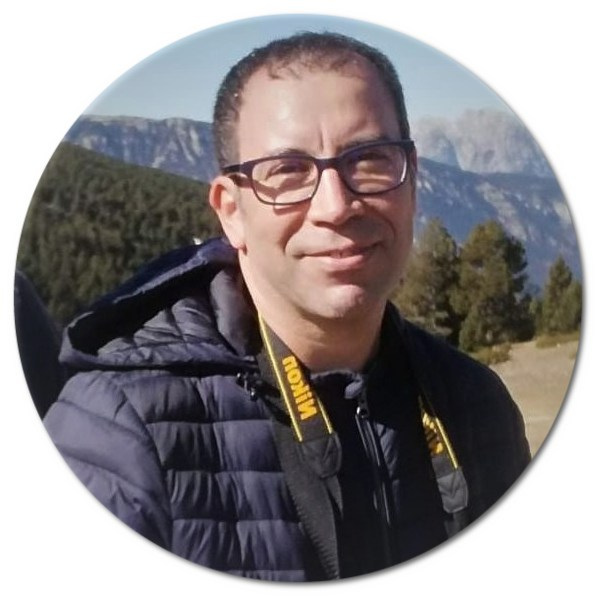
Mahjoub Himi
Associate professor (professor agregat)
Short biography
Professor of Applied Geophysics since 1th October 1972 at the University of Barcelona. Extensive experience in collaborating on relevant archaeological projects. Among the most relevant, Empúries, Pollensa and Sa Nitja (Menorca), cathedrals (Chartres, Tarragona, Girona and Barcelona), city walls (Lugo, Barcelona and Tarragona), necropolises (Sant’Antioco and Capo San Marco in Sardinia), castles (Alcazaba de Ronda, and Ibiza), thermal baths (Caldes de Montbui and Lugo) and potteries (Ermedàs and Navés). My research career is focused on the application of non-destructive technics, especially high-resolution geophysical methods to different areas of research. In this sense, I can differentiate two lines of research: The first line for the exploration and protection of groundwater resources, which includes the monitoring and modelling of coastal aquifers, the effects of wastewater on aquifer quality and the delimitation of pollution generated by leachate from landfills. The second line is about the application of geophysical methods for geoarchaeological and historical buildings.
I have participated in different projects in collaboration with the Catalan Institute of Classical Archeology, which have given relevant results as the location of the Augustus Temple in the basement of the Tarragona Cathedral. Between 2009 and 2010 I collaborated with a research group from the CSIC in two research missions of 45 day in the region of Homs and Damascus (Syrian Arab Republic), and in 2011 with another mission of 15 day stay in the Becaa Valley (Republic of Lebanon). During these stays, we have developed new high resolution non-destructive geophysical techniques applied to the delimitation of archaeological remains.
Research interests
The main objectives are the application of non-destructive high-resolution shallow geophysical methods for solving engineering and environmental problems, including archaeological and geoheritage projects.
Selected publications
Himi, M.; Anton, M.; Sendrós, A.; Abancó, C.; Ercoli, M.; Lovera, R.; Deidda, G.P.; Urruela, A.; Rivero, L.; Casas, A. (2022). Application of Resistivity and Seismic Refraction Tomography for Landslide Stability Assessment in Vallcebre, Spanish Pyrenees. Remote sensing, 14, 24. 6333.
Castanyer, P., Himi, M., Lovera, R., Rivero, L., Santos, M., & Urruela, A. (2022). Frequency Domain Electromagnetic mapping for delineating subsurface structures related to the historical port of Emporiae. Archaeological Prospection, 29(1), 33-43.
Casas, A.; Cosentino, P.L.; Fiandaca, G.; Himi, M.; Macias, J.M.; Martorana, R.; Muñoz, A.; Rivero, L.; Sala, R.; Teixell, I. (2018) Non-invasive Geophysical Surveys in Search of the Roman Temple of Augustus Under the Cathedral of Tarragona (Catalonia, Spain): A Case Study. Surveys in Geophysics. 39(6): 1107-1124.
Himi, M.; Armendariz, A.; Teira, L.; González, J.; Ibáñez, J.J.; Haïdar-Boustan, M.; Casas, A. (2016) Geophysical and Archaeological evidences of buried Epipalaeolithic, Neolithic, Bronze Age and Roman Architecture in West-Central Syria. Archaeological Prospection. 23: 273-285.
Himi, M., Pérez Gracia, V., Casas, A., Caselles, J. O., Clapés, J., & Rivero, L. (2016). Non-destructive geophysical characterization of cultural heritage buildings: applications at Spanish cathedrals. First Break, 34(8), 93-101.
Selected projects
Excavacions en el conjunt monumental de la Catedral de Tarragona (III Fase). Coordinator: Josep Mª Macias. Catalan Institute of Classical Archaeology. Funded by the Departament de Cultura. Direcció General del Patrimoni Cultural. Generalitat de Catalunya. Period: 2022-2025.
Empúries: Les àrees portuàries de l’antiga Empúries. Coordinator: Pere Castanyer Masoliver. Museu d’Arqueologia de Catalunya. Funded by Departament de Cultura. Direcció General del Patrimoni Cultural. Period: 2018-2021.
El Plio-Pleistocè del Camp dels Ninots i la depressió Prelitoral: evolució paleoclimàtica, dispersions faunístiques i humanes II. Coordinators: Bruno Gómez i Gerard Campeny. l’Institut Català de Paleoecologia Humana i Evolució Social. Funded by Departament de Cultura. Direcció General del Patrimoni Cultural. Period: 2018-2021
Muntanya viva: assentaments, recursos i paisatges a la Catalunya medieval (segles IVXIII). Coordinators: Marta Sancho i Pau Castell. Universitat de Barcelona. Funded by the Departament de Cultura. Direcció General del Patrimoni Cultural. Generalitat de Catalunya. Period: 2018-2021